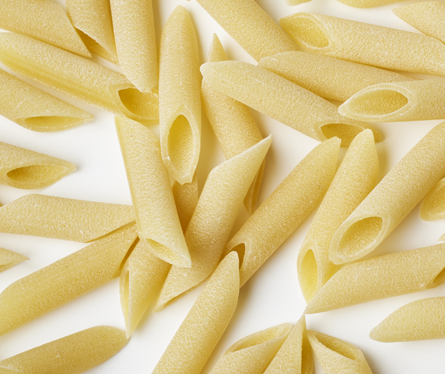The day our Danielle visited Pasta Martelli in Lari, Tuscany was penne day! Danielle was there while the Martelli family dried freshly made penne and packaged them (by hand).
You know that Pasta Martelli makes just 5 pasta shapes, right? Dino Martelli, the patriarch of the Martelli family, told us that they chose the 5 most classic pasta shapes, one of which is Le Penne Classiche. Check ’em out in the pic below, these penne have no ridges and we learned from Signor Dino that ridge-free is a very important choice, when it comes to penne.

“Penne is a traditional pasta shape. Penne were originally made without ridges. The ridging of penne was an invention of big industry. They needed to add the ridges because without them, the sauce just slipped off,” Dino Martelli told us.
His daughter Laura, chimed in saying: “Penne were born without ridges!”
It takes lots of extra time to make penne with the beautiful rough and porous surface that you see in the pic above. Therefore, the ridges on penne were a shortcut; an invention that came with the mass industrialization of pasta.
Martelli pasta is made with bronze dies, which are the molds that form the pasta shape. Mass market pasta is made with Teflon pasta molds. Why Teflon? Because you can make pasta SO MUCH faster with Teflon than bronze.
“We at Pasta Martelli make as much pasta in 1 year as Barilla does in 40 minutes,” Dino told us. Dang.
As Dino says, without the ridges sauces would slip right off the slick surface. That’s why industrial penne are usually with ridges. Furthermore, ridges help to speed up the drying process and to keep the dentiness of cooked pasta that has been dried very quickly in ovens.
Oh yea, and then there’s taste. Bronze die, un-ridged penne are AMAzing.
